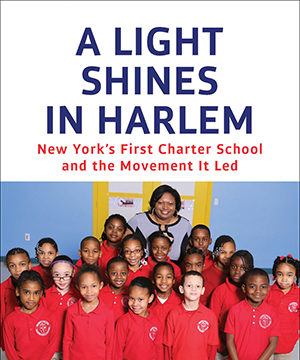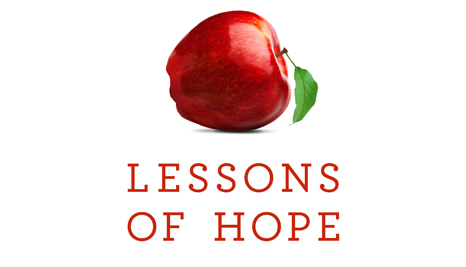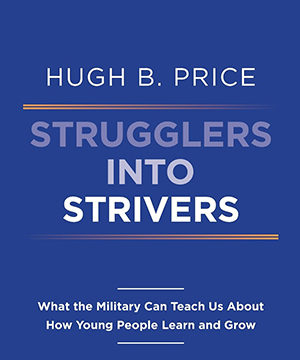 The One World Schoolhouse: Education Reimagined
The One World Schoolhouse: Education Reimagined
by Salman Khan
Twelve [Hachette Book Group], 2012, $26.99; 259 pages.
As reviewed by Nathan Glazer
We are getting used to explosive growth in the world of the Internet (note Facebook), but Salman Khan’s creation, in a few short years, of Khan Academy, with its potentially enormous impact on the slow-moving world of K–12 education, is still remarkable. The publicity material for Khan’s book says it is “the world’s most popular on-line learning site.” Khan tells us there are “more than six million unique visitors per month,…this number growing by 400% per year. The videos had been viewed over 140 million times and students had done nearly half a billion exercises through our software. I had personally posted more than three thousand video lessons—all free, untainted by commercials—covering everything from basic arithmetic to advanced calculus, from physics to finance to biology, from chemistry to the French Revolution.”
All this was not even an idea when Khan, at his wedding in New Jersey in 2004, learned that his 12-year-old cousin Nadia had done poorly on a math-placement exam back in Louisiana and would not be in a class for more-proficient students. Khan was then with a hedge fund in Boston; he had been a math whiz, earned three MIT degrees, and worked in Silicon Valley, and then came Harvard Business School and finance. He volunteered to tutor his cousin Nadia by long distance, “I’d equipped us both with inexpensive pen tablets that would allow us to see each other’s scrawls on our respective computers, using a program called Yankee Doodle.” He knew nothing formally about education or teaching, but he knew what he didn’t want: “the dreary process that sometimes went on in classrooms—rote memorization and plug-in formulas aimed at nothing more lasting or meaningful than a good grade on the next exam.” He learned very rapidly how to teach over the Internet as other tutees came in from his widespread family; in 2009 he left the hedge fund to devote himself full-time, as creator and sole employee, to Khan Academy.
Earlier, a friend had suggested that Khan post the lessons on YouTube so each student could consult them when needed. “YouTube?…that’s for cats playing piano, not serious mathematics. But three thousand videos later, I…wish I had thought of it myself.” Many people rapidly found their way to the lessons posted on YouTube, including Bill Gates, who, his blurb for the book tells us, “used these incredible tools with my own kids.” Gates’s blurb heads others by George Lucas, Eric Schmidt of Google, and Carlos Slim Helú, the Mexican entrepreneur who often challenges Gates as the richest man in the Western Hemisphere.
Support from the Gates Foundation and Google rapidly followed. An old schoolmate of Khan from Louisiana and MIT—another child of South Asian immigrants—was persuaded to leave McKinsey & Company to head the rapidly growing enterprise, which now includes, as one can see on the Internet, a few dozen young enthusiasts who seem a cross section of Silicon Valley.
Someone who does not own an iPhone or a tablet or an e-book reader and would be daunted by “Yankee Doodle” is probably not the best person to review The One World Schoolhouse, but I do find strong connecting links in the ideas Khan hooked onto in developing his educational vision. His animus toward the standard 50-minute lecture, which prevails from elementary school through college, and which very likely dates back to the medieval academy, where only the lecturer had access to the rare book, reminds me of an article I published in Harper’s in 1961. “The Wasted Classroom” laid out my observations after a few years of college teaching. Education should have changed once everyone had access to the book…and changed again when everyone gained access to almost everything through the Internet.
Khan’s well-shaped phrases call out to me, as they would to anyone with the experience of what schooling generally looks like. “Flipping the Classroom,” reads one chapter title: do the work at home, as the Khan Academy videos make possible and easy, and come to school for the teacher’s assistance with difficulties. “The Spirit of the One-Room Schoolhouse,” reads another: why do we have age-segregated classes, where the group is expected to progress at the same rate through the same material, when children learn at different rates and in different ways? Why not a mix, as was once necessitated by a thin population that gathered in one-room schoolhouses, where the older students could help teach the younger and thus add to their own learning?
Khan’s skeptical comments on tests and testing are not occasioned by the fear that regular school classes teamed up experimentally with Khan Academy material and approaches might not show up well, but by solid arguments against tests consisting of a crude sampling of what a student might know and that encourage teaching to the test. He is against “Swiss-cheese Learning,” in which holes are left: a curriculum should consist of learning the fundamentals well enough so one is able to handle the entire subject. Khan’s criticism of a 70 percent or even a 95 percent passing rate may be inspired by the South Asian parent who asks, “and where is the other 5 percent?” But his argument that knowing the subject means answering all the questions correctly is new and provocative.
There is much else that is persuasive in the Khan Academy. The lessons are presented by a voice and a blackboard, not a face. The short time span of the video lessons was perhaps initially required by the YouTube format but is well attested to by the research on how long students in a classroom typically concentrate, as Khan learned.
There will be no stock offering in Khan Academy: it is nonprofit, and its slogan is “A Free World-Class Education for Anyone, Anywhere.” The big question is, how can it connect to the traditional school system about which Khan is so skeptical?
Khan was approached by the Los Altos, California, school system and developed a program for experimental use of Khan Academy material in two 5th- and 7th-grade classes; the latter held children from “across El Camino Real,” the poorer part of Los Altos. Eventually, whatever Khan’s view of tests, the students had to take the California Standards Tests, and Khan was nervous about how they would perform. Brilliantly, it turned out, with enormous improvements for the poorer students.
One would like to know more of the details. The many millions of users of Khan Academy videos had come to it one by one, independently motivated, working, we assume, for the most part alone to supplement schoolwork or learn something new. How does one integrate such a program into a school? Were these classrooms really “flipped” such that students were expected to study the videos at their own rate at home and use the classroom and teacher for supplementary assistance? Will students really trade the homework that they now do so unwillingly for independent work at home on Khan Academy videos? Khan has great faith in the program’s ability to motivate students to do schoolwork—which in the end is what the videos really are.
One is left with many questions after reading this book. Clearly, the system was built on the model of mathematics and extended to other fields with a logical and systematic hierarchy of topics, with more advanced work building on more elementary work. How does it get adapted to the humanities, to history, the arts? Should it be?
But whatever the questions, what has already been done is potentially transforming, and accessible to anyone, anywhere.
Nathan Glazer is professor emeritus of education and sociology at Harvard University.
This article appeared in the Summer 2013 issue of Education Next. Suggested citation format:
Glazer, N. (2013). To YouTube and Beyond: Khan Academy founder tells his story. Education Next, 13(3), 74-75.





